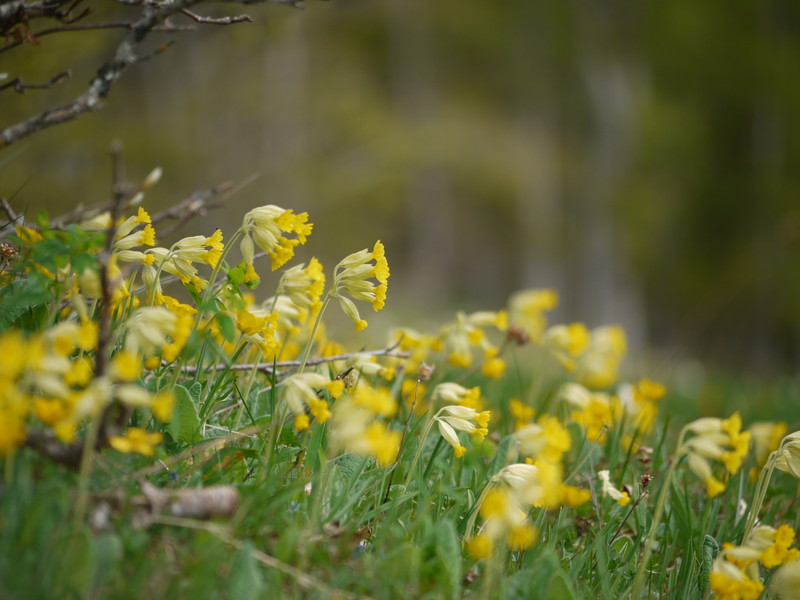Primrose
Primula officinalis L.
Primulaceae
Primroses in bloom announce the return of the spring and the beginning of plant picking. Its genus name, Primula, comes from the Roman Primulus, which means very first. It is also called cuckoo because it blooms at the time when the bird begins to sing.
It is found in meadows and light woods, in plains and in mountains. It is common in much of France, with the exception of Brittany and the Atlantic seaboard.
In the Drôme there are other wild primroses such as the common primrose, Primula vulgaris, lower and with large yellow flowers pale and fragrant, or the primula prima, Primula elatior. Primroses can easily hybridize with each other and form intermediate plants. This is accentuated by heterostyly, that is, the exisence of two types of flowers (one short style and the other long style), which increases the likelihood of cross-fertilization.
The flowers are perfumed and slightly sweet. They can be added to salads, just like young leaves. They are used to soothe cough, hence the name used to designate the primrose: coqueluchon, in reference to whooping cough which causes a very painful cough. Primrose flowers have other properties: diuretic, calming, analgesic, antirheumatic.
The history of its use is long and varied. Under Louis XV, it was used against paralysis and stuttering, then in the 19th century against arthritis and rheumatism before falling into oblivion and then emerging as a cure remedy during the 20th century.
The roots are aromatic, their smell remind that of anise, and they possess properties close to arnica. In the Drôme, it is also a good alternative to this plant, because primula is abundant whereas arnica is rare. However, crop picking must be respectful to the plant in order to guarantee its durability: well distributed on the site and no more than a handful of roots.
Primrose is easily cultivated in the garden. It attracts bees and other pollinators.
Precautions
La primevère contient des composés qui peuvent provoquer des allergies de contact, mais cela s’observe surtout chez les fleuristes qui en manipulent beaucoup. Ce risque est plus élevé avec les primevères cultivées.
Primerose oil against bumps and bruises
Récolter les racines de primevère (environ deux plants) dans un endroit où elle est très abondante.
Laver et laisser sécher quelques jours.
Couper en petits morceaux et placer dans un bocal de 50 ml environ.
Recouvrir d’huile d’olive jusqu’en haut et refermer le bocal.
Placer le bocal à l’abri de la lumière pendant 3 semaines, en l’agitant régulièrement. Filtrer et mettre dans un flacon en verre fumé en remplissant jusqu’en haut.
